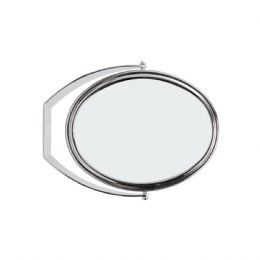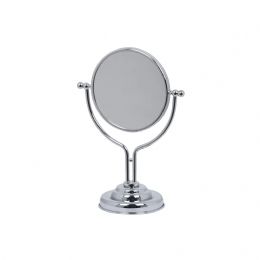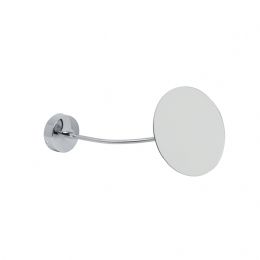Bathroom mirrors
Bathroom accessories
Bathroom mirrors
The oldest new of the existence of mirror come from Egypt when it was not known the union of glass with a sheet of metal.
The ancient mirrors were discs made of bronze, but also existed in copper and silver.
They were equipped with a handle to facilitate gripping.
The mirrors were reserved exclusively to the upper classes due to their high cost.
The mirrors reflecting the light were considered emanation of the Sun God.
At the time of the Roman Empire, although the art of glass making was very advanced there wasn't a large production of mirrors which remained predominantly metal.
In the Middle Ages, especially in France and Germany they began to appear small glass mirrors made of overlapping glass plates of metal.
It's however to Murano, the island in the Venice's lagoon, that the art of making the mirror developed and grew as in no other place in the world. Already in 1400 in Venice unic place in Europe, medium and large glass mirrors are produced. In the XV century, after the invention of Crystal, the mirror had a spread ever known before.
In the time were established in Venice the corporations of glassmakers and engravers, the mirrors were enriched with golden and elaborate frames.
For some time the Venetians tried to keep the secret of manufacturing the mirror but the high demand of the product meant that many craftsmen emigrated by foreign kings carrying information to let grow laboratories of production of glass and mirror in countries like France, Spain and Germany l.
The production of high quality spread quickly and in 1569 the Venetian mirror makers gathered in corporations, developed new techniques.
The late sixteenth century begins the incision, with cutting edge, of glass and mirrors in Murano.
The XVII century saw the production in Venice of mirrors with decorative function, the frames, first made of wood, are now covered with strips of mirror grinded, with straws, leaves and flowers of glass (concept that is attributed to the master Murano Giuseppe Briati ). The plates are also decorated with oil paints, while the wooden parts are painted or gilded according to the taste of the time.
Thanks to the excellent technique and creativity of its artisans, the Venice's lagoon experienced a flourishing time in its history and was immediately imitated and copied. Despite the prohibition to disclose, outside the territory of the Venetian Republic, the secrets of the production of mirrors
With the decline of the Serenissima and the development of nation-states European craftsmen glassmakers found at the courts the new richer customers and spread the art of making the mirror across Europe.
in modern times the mirror has found diffusion everywhere thanks to the process of global industrialization, but has not lost its appeal as a stylish element of decor of any home.























































